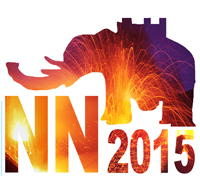Speaker
Click here to download the template: <a href="https://agenda.infn.it/materialDisplay.py?materialId=3&confId=5235"> Word </a>, <a href="https://agenda.infn.it/materialDisplay.py?materialId=2&confId=5235">Latex</a>
The cross section of the $^{12}$C+$^{12}$C fusion reaction at low
energies is of paramount importance for models of stellar
nucleosynthesis in different astrophysical scenarios, such as Type Ia
supernovae and X-ray superbursts, in which this reaction is a primary
route for the production of heavier elements. In a series of
experiments performed at Argonne National Laboratory using Gammasphere
and an array of silicon detectors, measurements of the fusion cross
section of $^{12}$C+$^{12}$C were successfully carried out in the
center-of-mass energy range of 3-5 MeV using the $\gamma$ and
charged-particle coincidence technique. These were the first
background-free fusion cross section measurements for
$^{12}$C+$^{12}$C at low energies. Our results are consistent with
previous measurements in the high-energy region; however, our lowest
energy measurement indicates a fusion cross section slightly lower
than those obtained with other techniques. Results will be presented
and the physical implications of extrapolations of the fusion
hindrance model and other theoretical calculations will be discussed.
This material is based upon work supported by the U.S. Department of Energy, Office of Nuclear Physics, under contract No. DE-AC02-06CH11357 and U.S. Department of Energy grant No. DE-FG02-96ER40978. This research used resources of ANL's ATLAS facility, which is a DOE Office of Science User Facility.

